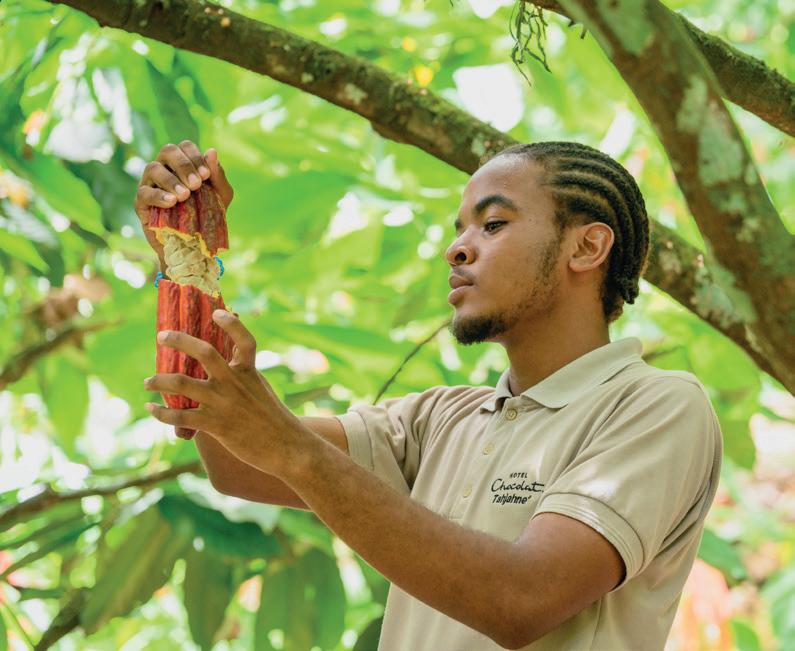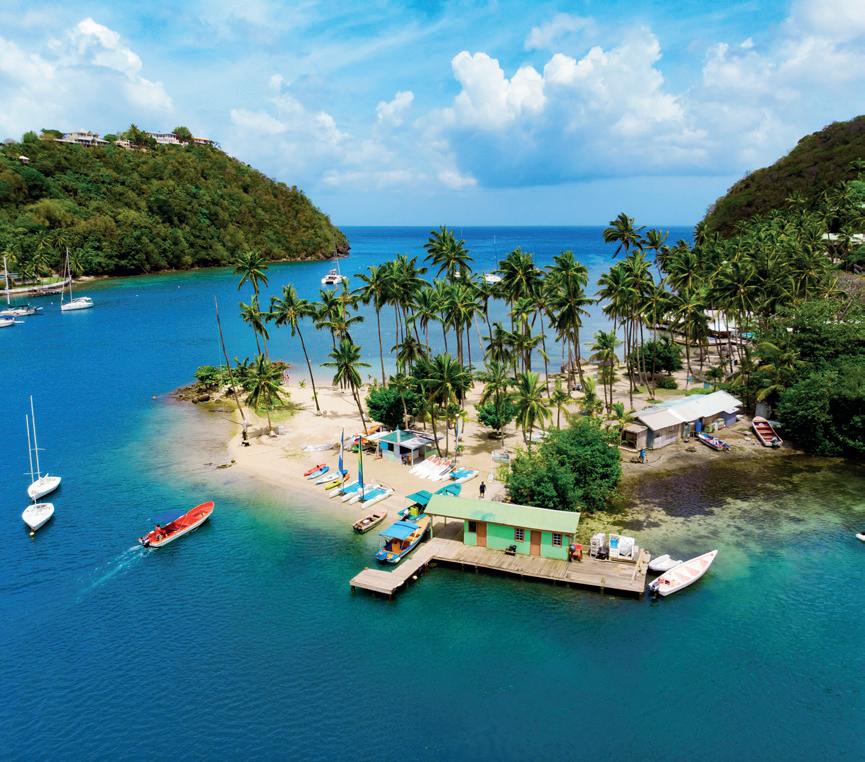
3 minute read
PIONEERING Saint Lucia
Splendid views, sultry vibes, and sweet, sweet offerings, Saint Lucia perfectly encapsulates the Caribbean idyll. At 27 miles long and 14 miles wide, this glorious mango-shaped isle shrouded in rainforest has everything from volcanic hot springs to floury white beaches lapped by the Listerine-blue waters of the Caribbean Sea. It’s easy to see why everyone from honeymooners to hikers, families to friends flock to its heavenly shores each year.
In peak season, visitors can outnumber residents three to one so holidays here come with an environmental responsibility. It’s increasingly important to stay in hotels and resorts which have solid green credentials, choose environmentally and socially responsible tours, and engage and invest in the island’s many local communities.
Advertisement
Saint Lucia’s beach resorts and hotels are a key part of the success of sustainable tourism on the island. Luckily, most have the foresight to protect their environment, are fully committed to the green programme and have proper systems in place to conserve energy and reduce waste. For example, in 2018, Ti Kaye Resort and Spa was the first hotel on the island to introduce a ban on single use plastics and many have since followed suit. Although big resorts such as Windjammer Landing, BodyHoliday Saint Lucia and Sugar Beach, and boutique properties like Jade Mountain and Anse Chastanet, have excellent eco-
Ethical Dining
credentials, it’s the smaller places, like Fond Doux Resort, housed in a 19th-century plantation house in Soufrière, that take sustainability to the next level.
Part of a working cocoa estate, this gorgeous eco-luxe resort is entirely Saint Lucian-owned, managed and staffed. It uses solar powered water heaters, energy efficient lights and low-flow loos, plus they only work with local tour operators, food producers and craft-makers.
From soursops and sweet potato to christophenes and callaloo, the produce from Saint Lucia’s small farms is as vibrant and colourful as its national dress. Castries Market is a lively hullabaloo where you’ll find local mamas jostling with hotel chefs over the best fresh fruit and veg for their kitchens, and stalls selling home-baked rum cake and distinctive locally made jewellery. Many hotels are embracing the farm-to-fork concept and creating their own organic gardens, including the BodyHoliday Saint Lucia. The popular wellbeingfocused resort now offers the I-TAL Experience – ital is a plant-based diet favoured by Rastafarians –where guests can take a guided walk through the hotel’s vegetable gardens to pick, prepare and cook an ital meal with a professional chef. However, not all visitors to Saint Lucia are as welcome. Lionfish, the beautiful stripey, spiny fish, are a notorious invasive species in Caribbean waters. While they
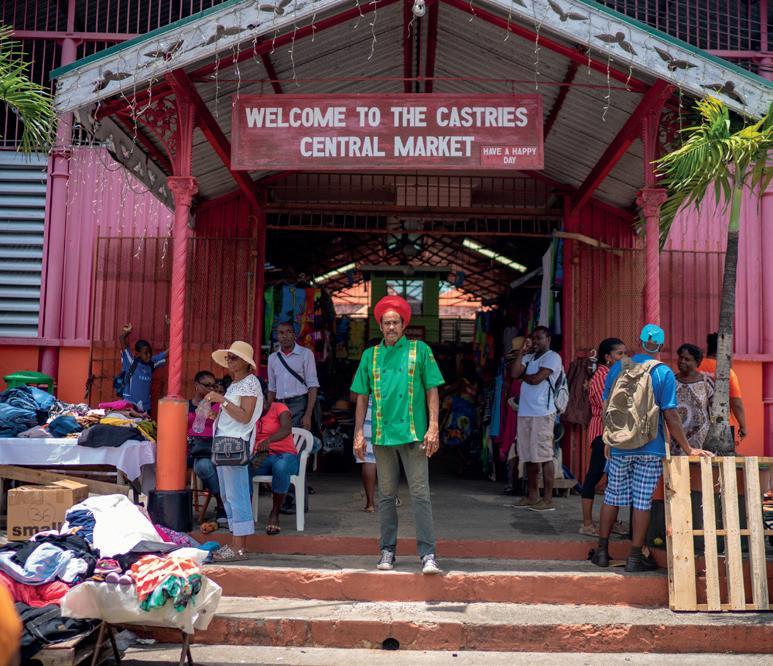
Good news from Saint Lucia

East Winds Resort has a living banana museum, which showcases indigenous banana varieties such as Cavendish, Lacatan and Gros Michel.
The Rabot Estate cocoa plantation uses every part of the bean – even the husks are turned into mineralrich chocolate compost.

Scuba Saint Lucia offers a PADI Invasive Lionfish Tracker Specialty course, where divers learn about controlling the lionfish population. The government has banned the importation of Styrofoam and selected singleuse plastic containers since August 2021.
might look pretty, they’re causing widespread damage to coral reefs by greedily eating everything that swims in their path. One way to help protect the marine environment is to eat them. Several hotels, resorts and restaurants on the island have wreck-diving sites. Thankfully, the island has some thriving coral reefs, largely thanks to the work of the Soufrière Marine Management Association, which is dedicated to protecting and preserving them. Scuba Saint Lucia, the dive centre at the Jade Mountain resort, has partnered with REEF Rescue Network and the Perry Institute for Marine Science to launch two coral nurseries just metres from the shore, which snorkellers can check on each day. become part of the Marine Catering and Training Consultancy’s ‘Eat Them To Beat Them’ campaign in order to manage the increasing numbers of lionfish. Luckily, they are delicious with white, flaky but firm flesh and a taste similar to grouper and mahi mahi.
Cool Conservation
The waters around Saint Lucia offer some incredible diving experiences where you can come face-to-fin with grouper, manta ray and barracuda or explore some of the many
Elsewhere, the Grande Anse Sea Turtle Conservation is in place to protect leatherback and other sea turtle breeds so they can return to the island’s beaches each year to lay their eggs in relative safety.
Of course, the best way to really see Saint Lucia’s natural attributes is from behind a cavalcade of dancing dolphins on a sunset cruise. There are several companies on the island which offer wind-powered catamaran cruises, so grab an authentic rum punch and kick back and enjoy the fruits of this beautiful mango-shaped Caribbean isle.
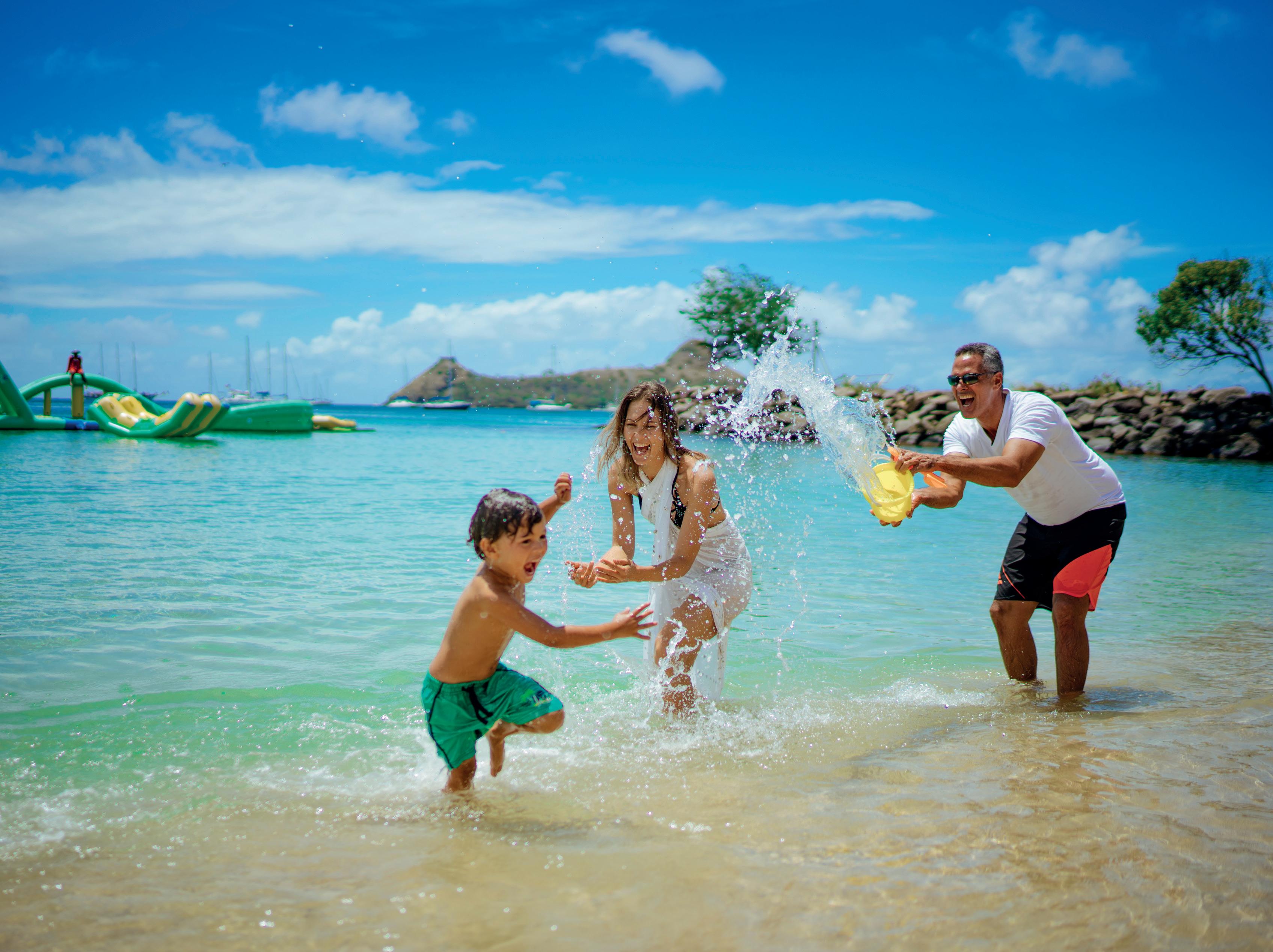
Parrot Spotting In The Rainforest
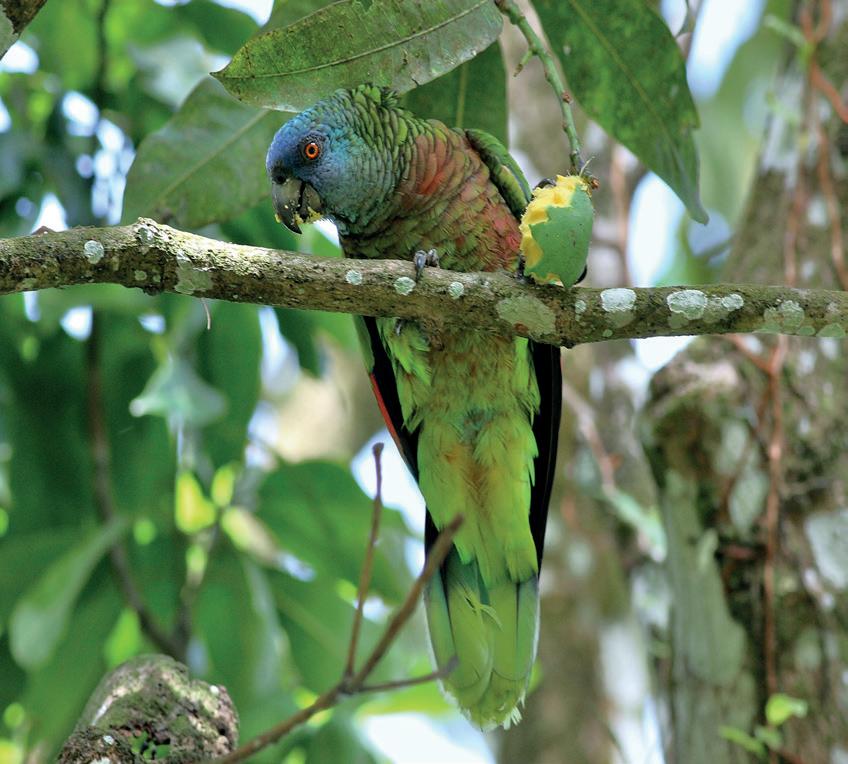
Much of Saint Lucia is covered in rainforest, which means it’s jam-packed with indigenous wildlife. Take a guided walk along the Millet Bird Sanctuary Trail and spot more than 30 breeds, including five indigenous to Saint Lucia, including the rare Jacquot parrot, the island’s mascot, and the oriole, black finch and warbler. Guided by local bird enthusiasts, the easy two-hour walk also offers spectacular views of Mount Gimie, Saint Lucia’s tallest mountain, and the Roseau Dam. spicetravelstlucia.com
